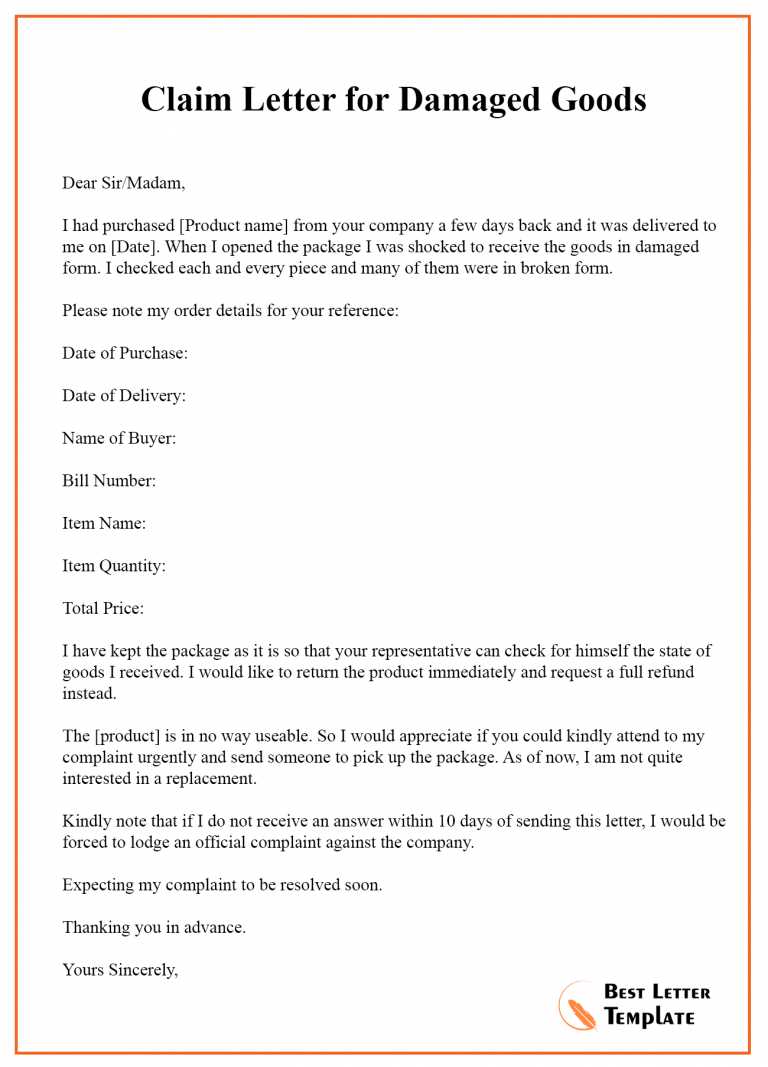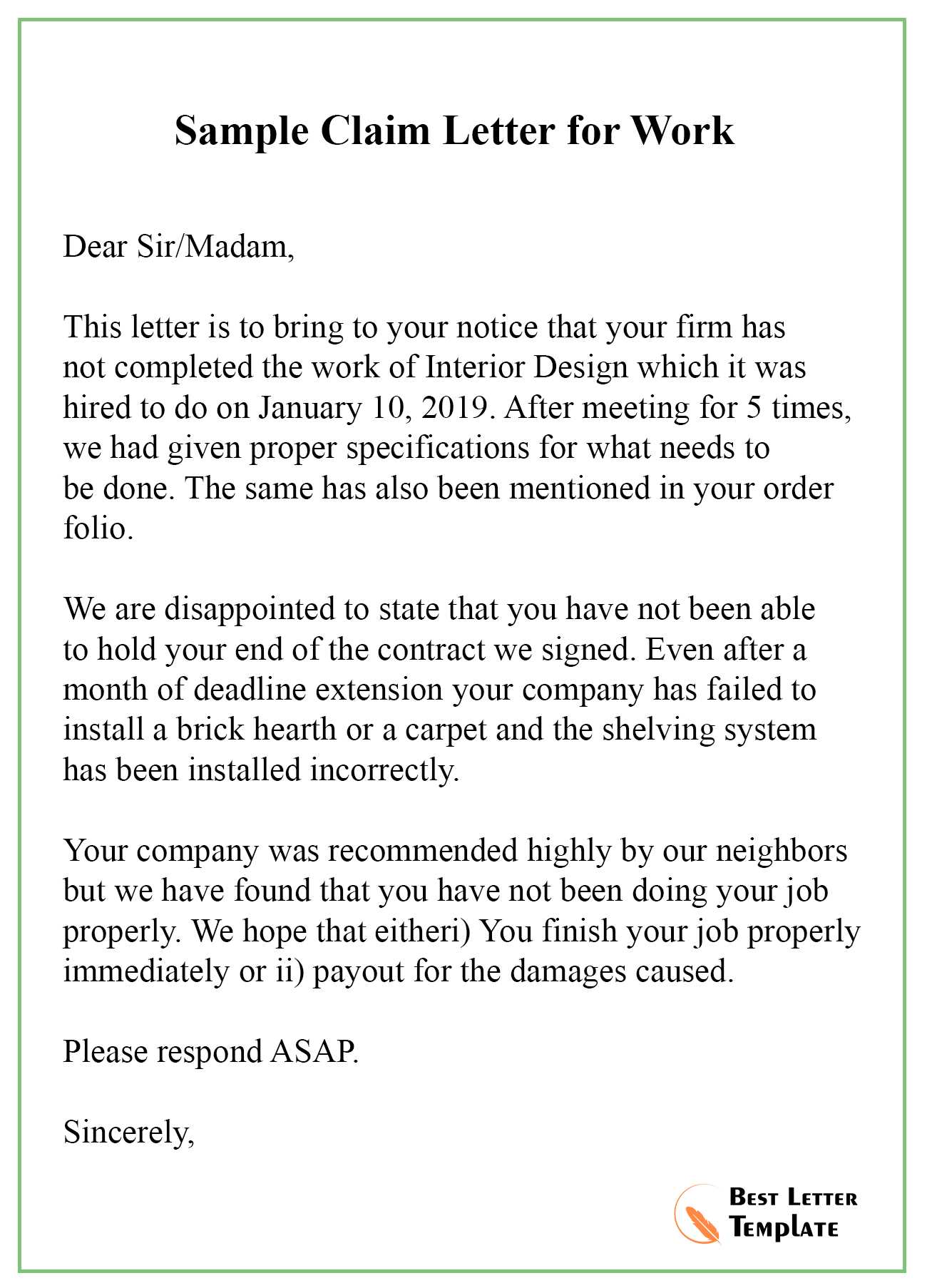Claim letter template word

Start by addressing the letter to the correct recipient, including their full name and job title. Make sure to use formal language and specify the purpose of your claim clearly. Be concise but thorough in explaining the issue, supporting your claims with facts and dates. If applicable, reference any previous communications or documentation related to the issue. Keep your tone professional and focused on the resolution, avoiding unnecessary details.
In the next section, explain your expectations or what you would like the recipient to do in response. Be clear about any actions or compensations you seek, specifying deadlines if relevant. Mention any steps you’ve already taken to resolve the issue, demonstrating that you’ve made an effort on your part.
Conclude by expressing your willingness to discuss the matter further if needed. Include a polite closing statement and provide your contact details. Double-check that your letter is free of errors and that it follows the standard structure, ensuring it’s professional and effective. A well-organized claim letter increases the chances of a positive resolution.

Claim Letter Template Guide
How to Structure Your Claim Letter
Choosing the Appropriate Tone and Language
Essential Information to Include in the Letter
Mistakes to Avoid When Writing a Claim
Formatting Tips for a Professional Appeal
Examples of Claim Letter Phrases
Start your claim letter by clearly stating your purpose. Mention the issue, include relevant details like dates or order numbers, and describe the resolution you seek. Be concise and focus on facts.
Adopt a respectful tone throughout. Even if you’re frustrated, avoid using aggressive or demanding language. Stay polite but firm, focusing on the problem and the solution, not emotions.

Include key details such as your contact information, the product or service in question, and a clear timeline of events. If applicable, provide reference numbers and any supporting documents, such as receipts or correspondence.

Avoid vague statements or exaggerations. Be specific about the issue and the resolution you’re asking for. Double-check for spelling and grammatical errors. Keep the letter brief, but don’t leave out any critical details.
Format your letter for easy readability. Use paragraphs to separate each point clearly, and keep the tone professional. Include your contact details and ensure that the company’s name and address are correct at the top of the letter.
Examples of phrases you can use in a claim letter:
- “I am writing to express my concern regarding…”
- “I request a resolution for the following issue…”
- “I would appreciate it if you could process this claim promptly…”
- “Please find attached supporting documents to assist in resolving this matter…”